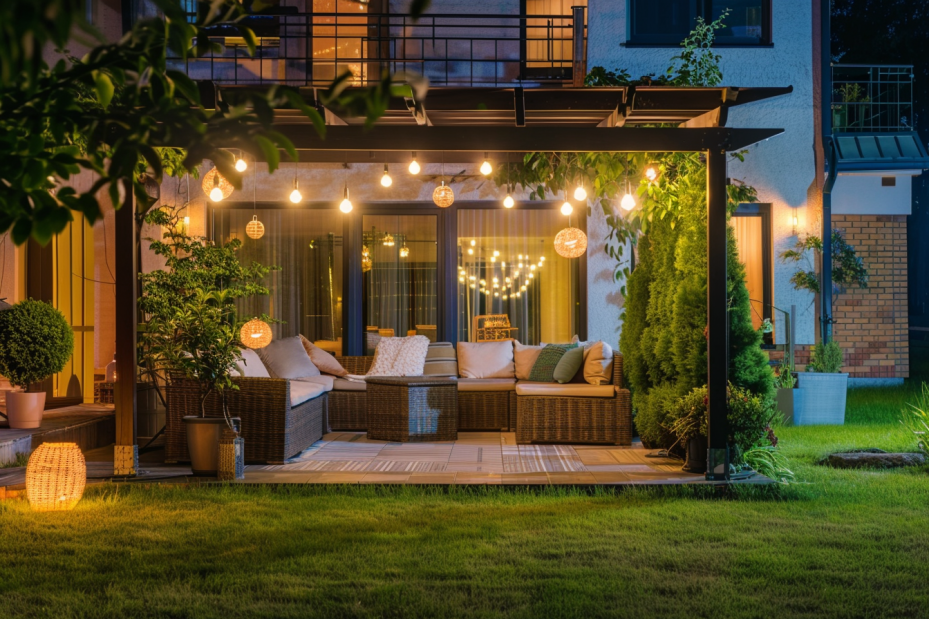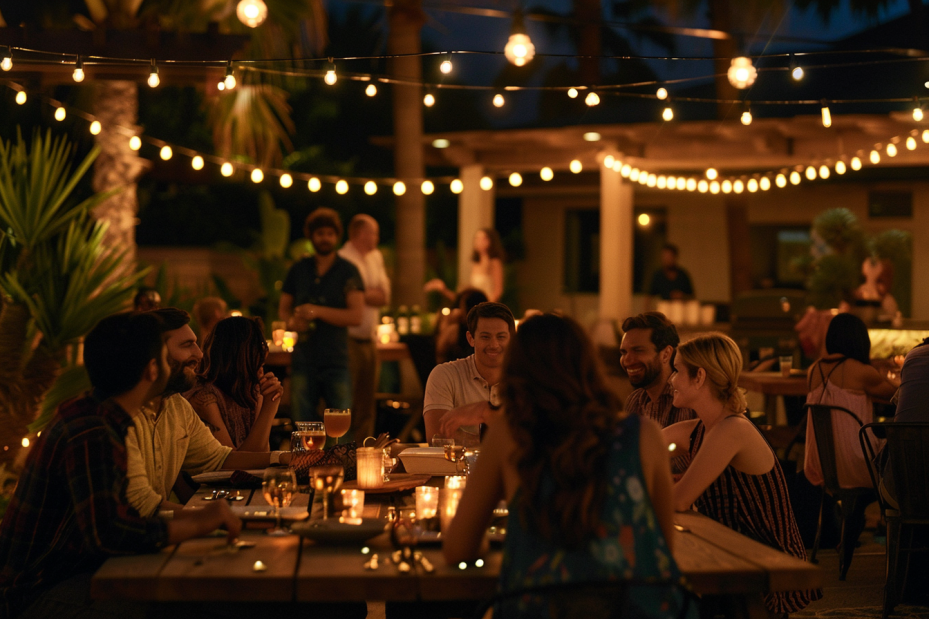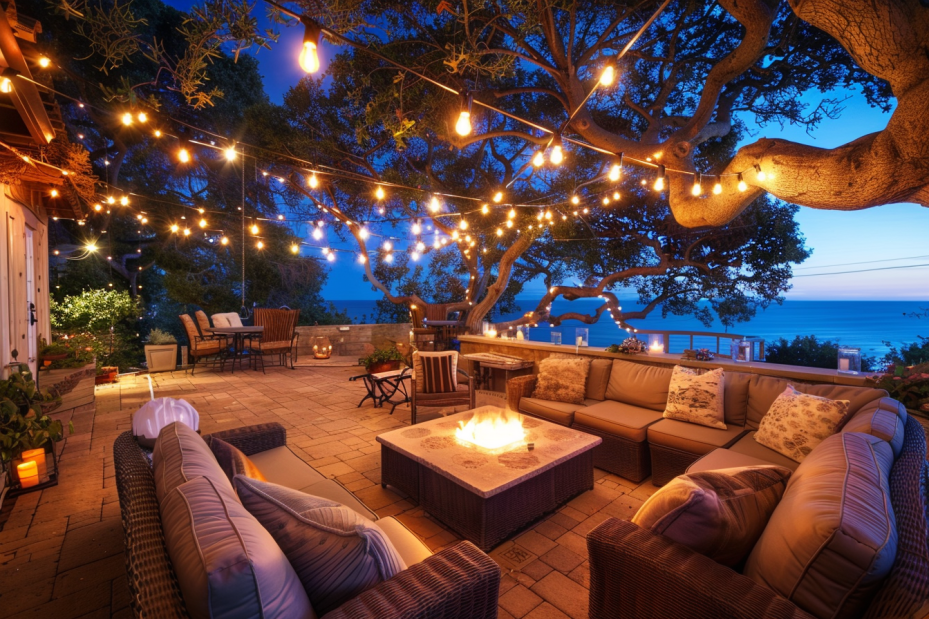Outdoor lighting serves a multitude of purposes, from enhancing the aesthetics of your home, event décor, to providing added security. Yet, the installation and maintenance of such fixtures entail certain risks, particularly when it comes to electrical wiring. For homeowners and DIY enthusiasts, it’s essential to understand and implement safety-driven practices to prevent accidents and ensure the longevity of your outdoor lighting systems.
This comprehensive guide will walk you through crucial wiring protocols, from the groundwork of electrical understanding to the nitty-gritty of troubleshooting.
Understanding Wiring Basics
Before you can safely install porch lights, it is vital to comprehend the foundational aspects of electrical wiring.

Types of Wiring for Outdoor Lighting
There are several types of wiring for different outdoor lighting applications:
- UF-B: This type of underground feeder cable is designed to be buried directly in earth and does not require a conduit.
- THWN-2: A multi-purpose PVC-coated wire, which is often run through conduit for additional protection in outdoor environments.
- NM-B: Typically used indoors, Non-Metallic sheathed cable is suitable for dry outdoor locations and must be protected from sunlight.
Each wire type has specific use cases and limitations, making it crucial to select the correct one for your outdoor lighting needs.
Safety Standards and Regulations
Adhering to local electrical codes and regulations is non-negotiable when working with outdoor lights. These standards exist to ensure the safety of your installation. It’s essential to familiarize yourself with regulations relating to:
- Type and depth of wire burial
- Distance from water sources
- Height of fixtures
- Type of weather protection required
Key Wiring Tips
Proper wiring practices can save you from future headaches and, more importantly, keep you safe.

Proper Grounding Techniques
Grounding is an essential safety feature in outdoor electrical wiring. Improper grounding can lead to electrical shock or fire hazards. To ground your outdoor lighting system effectively:
- Use ground-fault circuit interrupters (GFCI) for all outlets.
- Use a grounding rod when creating an in-ground lighting system to prevent high levels of stray voltage in the event of a short circuit.
- Each lighting fixture should be equipped with a ground wire and securely connected to the grounding system of your home.
Weatherproofing Connections
One of the biggest challenges in outdoor lighting wiring is the exposure to the elements. To protect against weather damage:
- Use weatherproof junction boxes for connections.
- Seal all connections with silicone caulking or waterproof wire nuts.
- Ensure that all cables are properly rated for outdoor use and protected from sunlight and moisture, which can degrade the insulation on the wires over time.
Voltage Considerations
Getting the right voltage to your outdoor light fixtures is a balancing act. Low voltage (12 volts) is commonly used for outdoor lighting because it is safer and easier to install. However, it’s essential to consider:
- The distance and gauge of the wire affecting voltage drop.
- Using a transformer to convert standard 120-volt service to 12 or 24-volt systems.
- Avoiding overloading circuits by calculating the total wattage of lighting on a circuit.
By carefully considering these voltage concerns, you can create a lighting system that provides the necessary illumination without compromising on safety.

DIY Installation Guide
For those eager to install or upgrade their patio lights, a systematic approach is crucial to maintain safety and functionality.
Step-by-Step Wiring Process
- Plan Your Layout: Determine the precise positions of your lighting fixtures and power sources. Draw a diagram to map out the wiring connections.
- Prepare the Area: Ensure the area where you’ll be working is dry and free from any standing water.
- Dig Trenches: If you are using conduits, dig trenches according to your diagram’s design, taking into account the type and depth you need for protection.
- Run the Wires: Place the wires in the trenches or conduit, leaving a few inches extra at both the fixtures and power source ends.
- Make Connections: Use wire connectors to join wires at junction points, remembering to keep the connections dry and protected.
- Test the System: Before burying any wires or finalizing fixture positions, turn the system on to test each fixture.
Maintenance and Troubleshooting
The work doesn’t end once your outdoor lighting is installed. Regular maintenance is crucial to keep your system running safely and efficiently.
Regular Inspection Tips
- Check for Damage: Visually inspect your wiring for any cuts, frays, or other damage that may have occurred since installation.
- Test GFCI Outlets: Check GFCI outlets regularly to ensure they are still operating correctly. They should be tested at least once a month.
Dealing with Common Wiring Issues
- Tripped Circuits: If your outdoor lighting frequently causes the circuit to trip, it may be a sign of overloading or a short circuit. Unplug the lighting and reset the breaker. Then, turn on each fixture one by one to identify the issue.
- Dimming Lights: If your lights are dimmer than usual, you may be experiencing a voltage drop. Check the length and gauge of your wiring, and adjust your transformer or power supply as needed.
- Water Intrusion: If you notice that your fixtures fill with water, disconnect the power immediately and reseal the connections with waterproof materials.

Conclusion
When it comes to outdoor lighting for your party decorations, safety should always be a top priority. Ensure all wiring is properly installed and insulated to avoid any potential hazards. Opt for weather-resistant lights and decorations designed specifically for outdoor use. Avoid overloading electrical outlets and use extension cords rated for outdoor use if needed. Regularly inspect the wiring for any signs of damage or wear and tear, and replace as necessary. By following these wiring tips, you can create a festive and safe outdoor party décor that everyone can enjoy.
With a focus on safety and a commitment to following best practices, your outdoor led lights can be enjoyed for years to come, bringing not only light but also the assurance of a job well done.

